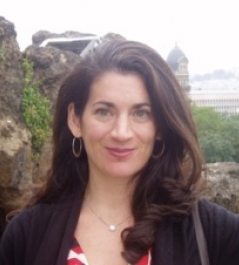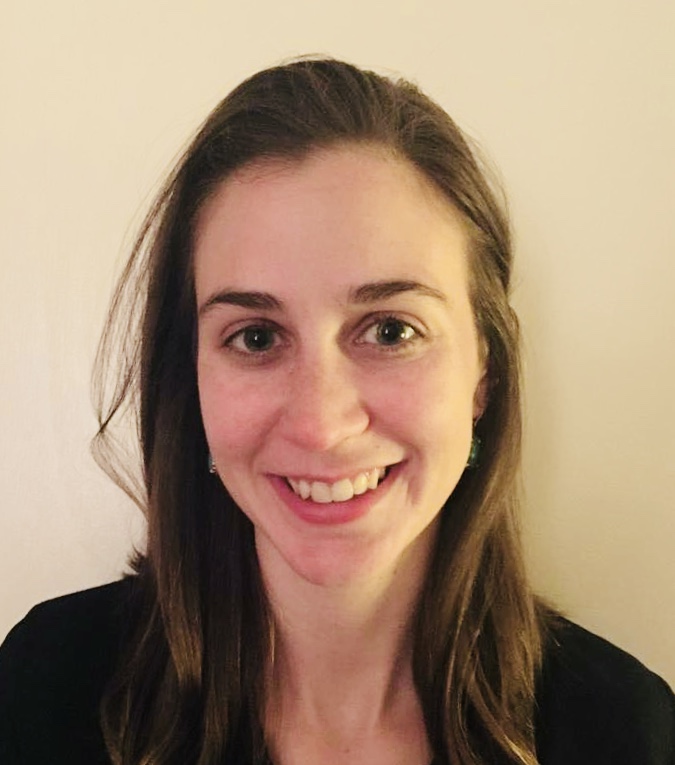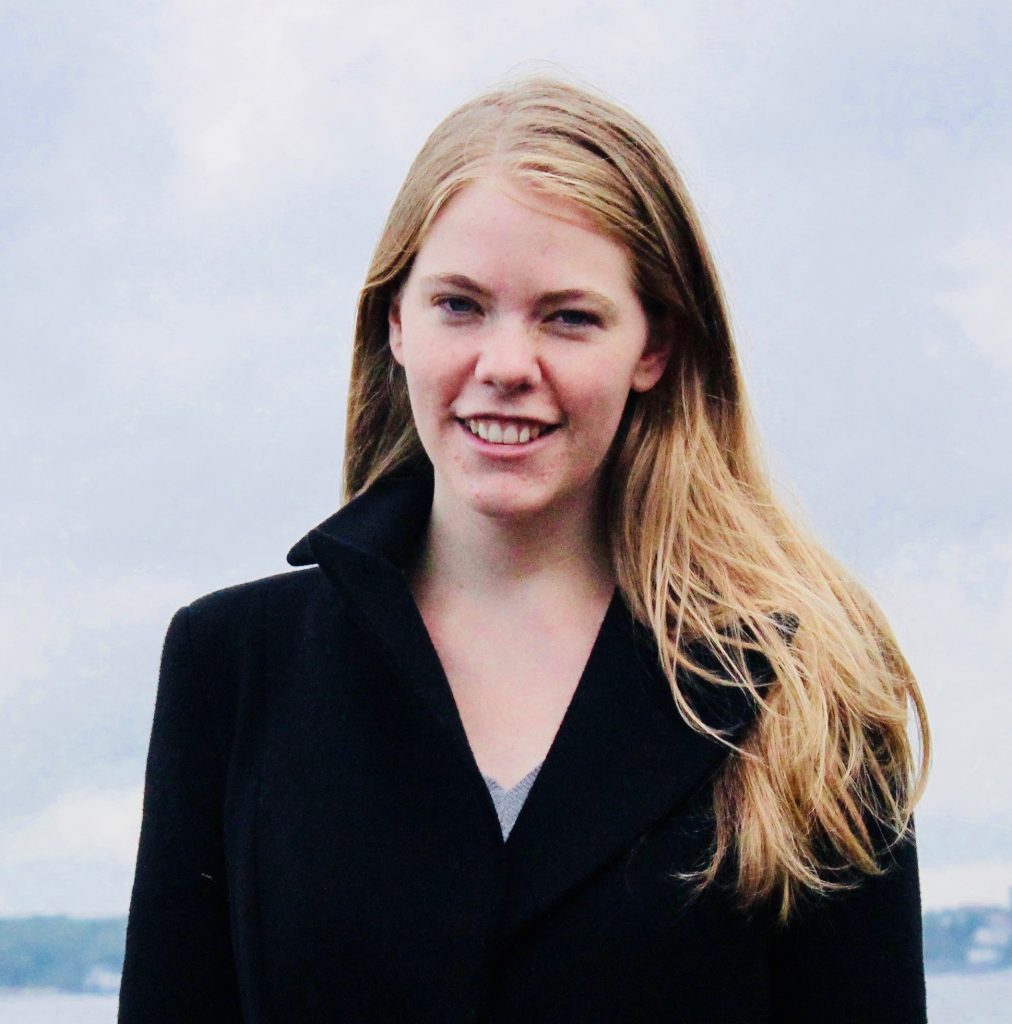The Issue
This year has brought a reawakening and amplification of social awareness on gender-related issues in the public sphere. Inspired by the voices of the #MeToo and #TimesUp movements, the May-June issue of the Forum takes up the question of how scholars whose research informs discourses about religion can uniquely contribute to extending an awareness of these issues through their scholarship and teaching. Using the resources available in the academic study of religion, contributors to this issue reflect outwards considering how their scholarly work is informed and transformed by movements like #MeToo, along with the various ways in which they hope this work can contribute to the wider conversation on gender, consent, and power dynamics.
The Forum was thrilled to collaborate with the Divinity School Women’s Caucus in putting this issue together. Allison Kanner (PhD student at the Divinity School and coordinator of the Women’s Caucus) and Anna Lee White (MA student at the Divinity School and Women’s Caucus representative) served as guest editors for this month’s issue. Throughout the month, scholars contributed diverse essays on the theme of gender and religion in the wake of #MeToo and #TimesUp. Professor Sarah Hammerschlag closed out the roundtable with a response. We invite you to join the conversation by submitting your questions and comments.
Published Essays:
- Rachel Schine (University of Chicago), Textual Harassment: Reading Medieval Arabic Love Verse in the Context of Consent
- Elizabeth Brocious (University of Chicago), #MeToo and Discourses of Love: A Mormon Case Study
- Samuel Catlin (University of Chicago), The Will to Ignorance: #MeToo as Pedagogical Crisis
- Response by Sarah Hammerschlag (University of Chicago), #TimesUp and the Myth of Neutral Space
by Sarah Hammerschlag
 Outside my office in Swift Hall, and, I imagine, elsewhere around the University of Chicago, new posters have been hung, shiny and maroon, with the following quote: “Education should not be intended to make people comfortable; it is meant to make them think.” These posters are among the latest efforts in the University’s larger campaign to brand itself the “free speech university.” The posters appeared on the walls one day to address us—a reminder that the University is not here to coddle its members. Education is the subject here and thus the actor; the agents behind it only implied and thus genderless, classless, colorless. The abstract noun “education,” the posters tell us, creates the “conditions” for “hard thought,” “strong disagreement,” and “independent judgment.” We, the readers of the posters, women and men, students and teachers, privileged and less privileged alike, are tacitly instructed to absorb the force of these adjectives by which the University has chosen to define the endeavor of education in which we are all in fact participants. We are, I imagine, supposed to recognize the nobility in what is “hard,” “strong” and “independent.” We are not, however, to attribute these qualities to any particular actors, not to query our educators’ motives: not to consider the human—often male—desire and demanding gaze that so often goes into making us uncomfortable. Instead, we should take note that the quote is attributed to the University’s only female president, and thus we should assume that these virtues are gender neutral and all of this discomfort is simply part and parcel of the pursuit of knowledge.
Outside my office in Swift Hall, and, I imagine, elsewhere around the University of Chicago, new posters have been hung, shiny and maroon, with the following quote: “Education should not be intended to make people comfortable; it is meant to make them think.” These posters are among the latest efforts in the University’s larger campaign to brand itself the “free speech university.” The posters appeared on the walls one day to address us—a reminder that the University is not here to coddle its members. Education is the subject here and thus the actor; the agents behind it only implied and thus genderless, classless, colorless. The abstract noun “education,” the posters tell us, creates the “conditions” for “hard thought,” “strong disagreement,” and “independent judgment.” We, the readers of the posters, women and men, students and teachers, privileged and less privileged alike, are tacitly instructed to absorb the force of these adjectives by which the University has chosen to define the endeavor of education in which we are all in fact participants. We are, I imagine, supposed to recognize the nobility in what is “hard,” “strong” and “independent.” We are not, however, to attribute these qualities to any particular actors, not to query our educators’ motives: not to consider the human—often male—desire and demanding gaze that so often goes into making us uncomfortable. Instead, we should take note that the quote is attributed to the University’s only female president, and thus we should assume that these virtues are gender neutral and all of this discomfort is simply part and parcel of the pursuit of knowledge.
On the May 16th episode of “America Inside Out,” the University’s president was asked to defend this position in an episode about free speech on university campuses. Katie Couric opened by paraphrasing Northwestern President Morton Shapiro’s suggestion that students need to feel comfortable to engage in uncomfortable learning. President Robert Zimmer responded, “Well the question is, what is actually happening on the ground?” and then he continued, “Do students feel free to have unpopular opinions, do they feel free to argue with the faculty, do the faculty feel free to challenge the students?” His suggestion was clearly that all this talk about sensitivity and comfort was a form of censorship, that it was inhibiting students and faculty from speaking their mind. As though without it the classroom would be a neutral space, denuded of forces that function to silence its members.
While watching the episode I was reminded of Geoffrey Stone’s “Aims of Education ” address two years earlier which followed up on a letter from John “Jay” Ellison, PhD, advising incoming students that they were on their way to a place which does not “support trigger warnings” or “condone safe spaces.” In the address, Stone described the University of Chicago’s current position against “trigger warnings” and “safe spaces” as consistent with its earlier commitment in the 1930’s to allow Communist activists on campus. He contrasted the “courageousness” of students in 1948 who submitted themselves to congressional hearings to fight McCarthyism with the calls by current students at other universities to dis-invite public speakers from the far right because of racist, sexist and homophobic positions. Though he allowed that the activists’ concern could stem from a well-developed sense of injustice, and even acknowledged the view that historically marginalized groups who were now speaking up might deserve credit for demanding equality and respect in the face of a history of oppression, he also described the activists’ sensitivity to hate speech as a fear of criticism, the consequence of a sheltered upbringing and the overzealousness of “helicopter parents.”
After Stone’s address, delivered on a searingly hot night from the lofty stage of Rockefeller chapel to a crowded room of wilting first-year college students, everyone was ushered back to their dorms for the requisite small-group discussion. I served as a faculty interlocutor for one such group, a task for which I was prepared by a pre-circulated list of discussion questions, all which seemed aimed at inculcating the University’s stated values. The conversation that ensued might help us to think indeed about what, according to President Zimmer, is actually happening “on the ground.” The first students to chime in did exactly what they thought they had been instructed to do. They affirmed Stone’s position. They asserted to their peers by virtue of their opinions that they indeed belonged at the University of Chicago. Not surprisingly, every single one of them was white and male. Ignoring the discussion sheet, I suggested possible rebuttals in the hopes of encouraging healthy disagreement. I asked the students to consider how a history of unequal opportunity could color and change a discursive space. It was warm in the apartment where we met, sitting in a circle on the ground, and it soon became clear to me that all of the students there—white, black, Asian, Latino, female and male—were at least a little bit scared. This was a crucial moment in their undergraduate career, a chance to make friends and perhaps more importantly to prove to themselves and to their peers that they belonged at the University of Chicago. A few students shifted in their seats, but not a single student was willing to criticize Stone’s address. How could they? The standard had been set and it had been set by Stone. Given the way the conversation had been framed, criticism would mean defending “trigger warnings” and “safe spaces,” the very terms having now been indelibly associated with censorship and weakness.
I raise this incident here not to protest the principle of free speech. Who really is against it? But rather to resist the concept of the neutral space that seems to be undergirding the University’s framing of the issue. President Zimmer’s statements indicate a presumption that all the talk on campuses about sensitivity and attentiveness to the experiences of those to whom one is speaking is itself a form of censorship. As though centuries of refusing even to see the subjugation and invisibility of those without power has not itself been a means to silencing their voices.
All three essays published here on this forum, along with the #TimesUp and #MeToo movements, are part of a larger conversation aimed at finally allowing subjugated voices to be heard. They expose exactly what the University’s campaign has failed to acknowledge, and which its own campaign exemplifies: how institutions that claim to represent truth or good taste or the moral good function to hide and protect from view the desiring subjects in positions of power who benefit from the authority that imbues these supposedly neutral ideals.
The essays themselves encompass a spectacular range of contexts: Liz Brocious writes with clarity and nuance about the patriarchy of the Church of Jesus Christ of Latter Day Saints. Among other things, the church’s hierarchy serves, she points out, to protect the powerful from scrutiny. It consequently leaves women and children without recourse and credibility when violated and abused by bishops and priests, offices open only to men who are unquestionably bestowed with “love, trust and admiration” by virtue of their positions. Rachel Schine beautifully describes the dynamics of female exposure and misrepresentation in the 12th-century Arabic popular epic, Sīrat Dhāt al-Himma, asking us not to abandon these texts because of their gendered perspective but to use the #MeToo and #TimesUp movements to hold even our canonical texts accountable and to help us to see “a woman’s absence in certain spaces as a product not only of patriarchal exclusion, but of a rebellion against forms of inclusion that are ugly and incomplete.” Invoking feminist critic Rebecca Solnit, Sam Catlin writes elegantly about the gendered fiction of critical disinterest that according to some “white guys”1 is supposed to accompany the appreciation of true art, no matter how disturbing or violent its representation. Aren’t we better readers, Catlin asks, when we refuse to treat art as something divorced from reality, when we see the parallels between courtroom and novel, when we understand by virtue of reading Pamela how the limits of perspective, especially when that perspective is gendered female, can evoke suspicion and incredulousness?
They suggest that the presupposition of “neutrality,” whether of an institution of education, a church, or in a text, is often not a prerequisite for good scholarship or fair engagement, but the intellectual equivalent of a duck blind, a camouflaged site of strategic advantage. It functions as a safe place from which to shoot.
This isn’t to say that such acts of camouflage are the exclusive domain of white men in power. If there is a hazard to introducing the #MeToo movement into the classroom, it is that when we read and only identify with the position of victim, whether in a text or an institutional setting, we too risk disavowing responsibility for our own will to power. This has equally been exposed by those on the left when they unthinkingly endorse any policy or protest that targets those in power. It becomes an excuse to deny our own culpability, the fact that there is no easy stance that allows one to occupy the space of the good. The insistence on retribution at the expense sometimes of nuance and compassion in the #MeToo movement has also made that abundantly clear. But the message that there is no such thing as a neutral space—the demand at the heart of #TimesUp and of the essays produced for this forum that we need to always pay attention to the dynamics of power in our institutions and the desires animating our texts and our aesthetic inclinations—is one that implicates all of us.
The University’s campaign has occluded exactly what the #TimesUp movement and these essays bring to the fore: that an honest conversation about free speech must include a discussion of the asymmetries in power and privilege that are conditioning the conversation itself. As Brocious, Schine, and Catlin all prove here, these dynamics can themselves be a subject of scholarly inquiry and critical debate, and a part of that debate should and will include the stakes of the University supporting and sponsoring those who spout a rhetoric of hate. The irony is that those actors who are being accused of calling for censorship are often, though not always, doing quite the opposite. At the heart of the #MeToo movement is an impetus to expose the means by which those in positions of authority disguise their desires and mask their advantages through appeals to supposedly neutral ideals. The goal should be—as it is for our essayists here—to expand the purview of what we understand as knowledge so that it includes the acknowledgment of and the taking of responsibility for the structural inequalities created by racism and sexism. Ironically, those protecting themselves most avidly from discomfort in this debate are often not those calling for accountability, but those in power avid to protect their own advantages. ♦
 Sarah Hammerschlag is Associate Professor of Religion and Literature, Philosophy of Religions and History of Judaism at the University of Chicago Divinity School. Her research thus far has focused on the position of Judaism in the post-World War II French intellectual scene, a field that puts her at the crossroads of numerous disciplines and scholarly approaches including philosophy, literary studies, and intellectual history. She is the author of The Figural Jew: Politics and Identity in Postwar French Thought (University of Chicago Press, 2010) and Broken Tablets: Levinas, Derrida and the Literary Afterlife of Religion (Columbia University Press, 2016) and the editor of the forthcoming volume Modern French Jewish Thought: Writings on Religion and Politics (Brandeis University Press, 2018). The Figural Jew received an Honorable Mention for the 2012 Jordan Schnitzer Book Award, given by the Association of Jewish Scholars, and was a finalist for the AAR’s Best First Book in the History of Religions in 2011. She has written essays on Jacques Derrida, Emmanuel Levinas and Maurice Blanchot which have appeared in Critical Inquiry, Jewish Quarterly Review and Shofar, among other places. She is currently working on a manuscript entitled “Sowers and Sages: The Renaissance of Judaism in Postwar Paris.”
Sarah Hammerschlag is Associate Professor of Religion and Literature, Philosophy of Religions and History of Judaism at the University of Chicago Divinity School. Her research thus far has focused on the position of Judaism in the post-World War II French intellectual scene, a field that puts her at the crossroads of numerous disciplines and scholarly approaches including philosophy, literary studies, and intellectual history. She is the author of The Figural Jew: Politics and Identity in Postwar French Thought (University of Chicago Press, 2010) and Broken Tablets: Levinas, Derrida and the Literary Afterlife of Religion (Columbia University Press, 2016) and the editor of the forthcoming volume Modern French Jewish Thought: Writings on Religion and Politics (Brandeis University Press, 2018). The Figural Jew received an Honorable Mention for the 2012 Jordan Schnitzer Book Award, given by the Association of Jewish Scholars, and was a finalist for the AAR’s Best First Book in the History of Religions in 2011. She has written essays on Jacques Derrida, Emmanuel Levinas and Maurice Blanchot which have appeared in Critical Inquiry, Jewish Quarterly Review and Shofar, among other places. She is currently working on a manuscript entitled “Sowers and Sages: The Renaissance of Judaism in Postwar Paris.”
Guest Editors
 Allison Kanner is a Ph.D. student in Islamic Studies at the University of Chicago Divinity School. Her research focuses on intersections between medieval Islamicate romance literature, mystical literature, and gender and sexuality in Religious Studies. She currently leads the Women’s Caucus, a student-founded club at the Divinity School, as well as a weekly Persian language conversation group.
Allison Kanner is a Ph.D. student in Islamic Studies at the University of Chicago Divinity School. Her research focuses on intersections between medieval Islamicate romance literature, mystical literature, and gender and sexuality in Religious Studies. She currently leads the Women’s Caucus, a student-founded club at the Divinity School, as well as a weekly Persian language conversation group.
 Anna Lee White is an MA student in History of Religion at the University of Chicago Divinity School. Her studies focuses on the history of South Asian religious literature. She plans to pursue research on devotional poetry and hagiographies from early-modern North India during a PhD at McGill University. She is also a member of the Divinity School Women’s Caucus.
Anna Lee White is an MA student in History of Religion at the University of Chicago Divinity School. Her studies focuses on the history of South Asian religious literature. She plans to pursue research on devotional poetry and hagiographies from early-modern North India during a PhD at McGill University. She is also a member of the Divinity School Women’s Caucus.
- Solnit, https://lithub.com/men-explain-lolita-to-me/ ↩

